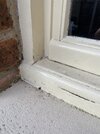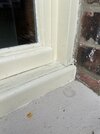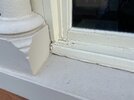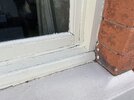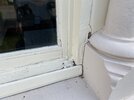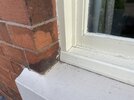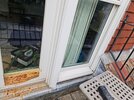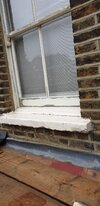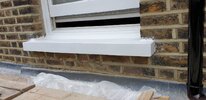I’ve recently moved into a new house. Built 1906 it’s in need of sympathetic repair work.
I’ve cleaned out all the gutters which were blocked up and causing damp, repointed some ground floor brickwork with lime mortar, had a rear chimney stack taken down (breasts had been removed with no support!) and have a few more jobs.
I’m concerned with the wooden windows. Many of them are rotten at the bottom — mainly the cills and the bottom ~1 inch of the frame. You can see it in my picture (my Dad is in the reflection, I’m much younger and poorer!) If I press these areas they are like sponges.
They probably need replacement, but I can’t afford it, so I want to repair them to at least get us through a few winters. I had initially looked at chopping out the rot and splicing in hardwood, filling and painting however I’ve since learnt about epoxy resin repairs.
Does anybody know if this could work or have any advice?
I’ve cleaned out all the gutters which were blocked up and causing damp, repointed some ground floor brickwork with lime mortar, had a rear chimney stack taken down (breasts had been removed with no support!) and have a few more jobs.
I’m concerned with the wooden windows. Many of them are rotten at the bottom — mainly the cills and the bottom ~1 inch of the frame. You can see it in my picture (my Dad is in the reflection, I’m much younger and poorer!) If I press these areas they are like sponges.
They probably need replacement, but I can’t afford it, so I want to repair them to at least get us through a few winters. I had initially looked at chopping out the rot and splicing in hardwood, filling and painting however I’ve since learnt about epoxy resin repairs.
Does anybody know if this could work or have any advice?




